Maritime traditions endure in the waterways of Venice
The Venetian art of sailing vela al terzo is a marvellous way to travel on the city’s waterways that can be only reached by boat.
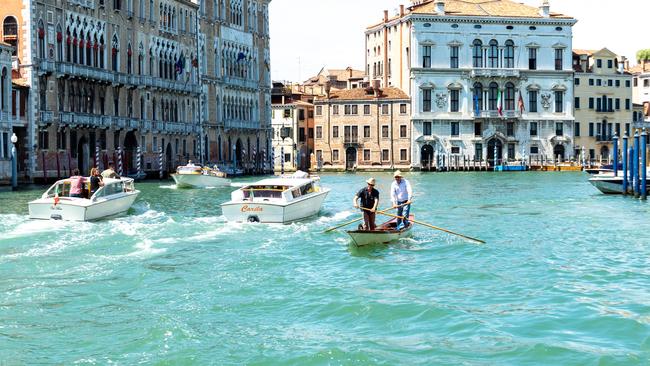
Venice is filled with alluring small museums showcasing its once-great maritime past, but the most atmospheric shrine is surely the office of the still-active sailing club Venice A Bordo (Venice On Board). Hidden on a wharf in a working shipyard in the Renaissance-era boatbuilding district of Cannaregio, it resembles a prop room for a silent-era pirate movie. Every inch of floor space is covered with coils of rope, canvas, lethal-looking metal tools and handmade models of Venetian sailing craft. Rows of oars are balanced across the ceiling, and an entire wall is covered by forcole, wooden oarlocks with shapes that have been developed over centuries to allow different rowing angles, each one superbly carved and hung in racks like abstract artwork.
I end up in the headquarters because I’ve signed up for a short course in the near-forgotten Venetian art of sailing vela al terzo, on the uniquely designed vessels developed to navigate the Lagoon in the Middle Ages. After finding the warehouse office (and getting lost several times in back alleys, despite poring over Google Maps), I spot my instructor reclining in the penumbral darkness behind a desk covered in marine charts. Emiliano Simon is a thirty-something Venetian who is one of the club’s three original founders. Before I can consider sailing, Emiliano explains, my first day will be spent mastering voga alla veneta, Venetian-style rowing. Minutes later, we’re out on the canal, clambering on to the colourful deck of a traditional 5m-long wooden topa. We’ve rowed only five minutes when we’re pulling up at the first stop for any lesson. “First, we have an espresso,” Emilio says. “It’s very early.” This is Venice, after all, he adds.
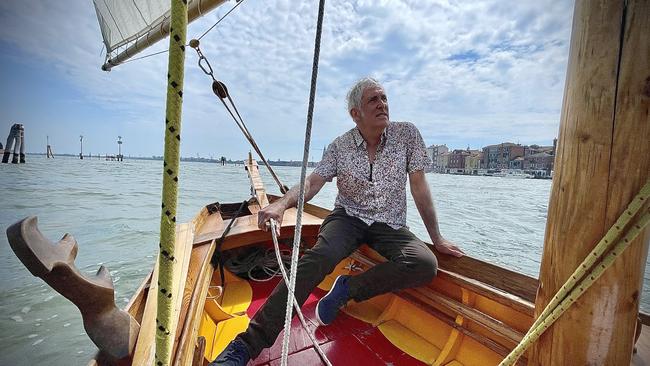
In 2014, Emiliano and two friends founded the not-for-profit Venice A Bordo to help restore Venice’s seafaring heritage, which reached its height in the days of the Doges, when the city ruled a vast Mediterranean empire. Sailing and rowing remained key parts of the city’s daily life until the 1960s, when motorised boats began to replace traditional craft.
While first aimed at teaching Venetians these lost skills, the club soon decided to include travellers, giving them a chance to explore the Lagoon, a shallow, marshy expanse separated from the Adriatic by thin barrier islands. It has 118 islands, only 15 of which can be visited by public vaporetto or ferry. The Lagoon includes swathes of beautiful coast fringed by flowers, with colonies of herons and pink flamingos. Espresso happily consumed, I begin my rowing lesson. Resisting the urge to break into O Sole Mio, I take a stance in the middle of the deck and grip the oar with the ridged (“diamond”) side upwards, while Emiliano stands at the stern. Traditional Venetian boats are powered by two oarsmen, as were gondolas until the 19th century, when a new lopsided hull design allowed a single gondolier.
He explains the four steps as if they were a dance movement. “Gira” – rotate the oar backwards, “like revving a motorbike”; “Spingi” – dip the oar; “Taglia l’aqua” – “cut” the water with a smooth stroke; “Torna” – rotate the oar back to its original position. As we slide down the side-canals in silence, I am able to get into the rhythm. “It’s very meditative,” Emiliano says. “So peaceful.” It also allows me take in the marvellous architectural details of canals that can be explored only by boat, including ornately carved marble door frames of palazzos with worn stone steps descending to the waves. The aristocratic owners used to arrive by boat; only the servants used the pedestrian alleyway behind.
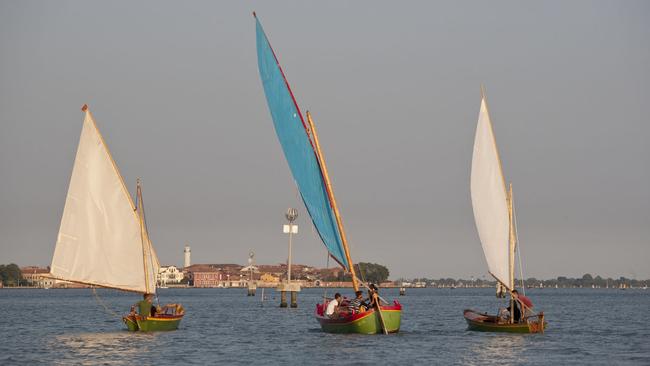
The soothing ambience ends abruptly when we enter the Grand Canal, where waters are boiling thanks to all the motor boats, including an ambulance vessel that sends waves over our bow and threatens to plunge me overboard. “You are getting the full Venetian water experience today,” Emiliano says, laughing. When we make it to the other side of the canal, he declares me ready to tackle the next step, sailing in the topa.
Next morning, I dutifully return to the office and help load the mast and canvas. Our destination will be the abandoned Sant’Andrea Island, he says, which is dominated by a ruined 18th-century military fortress and can be visited only by private boat.
After rowing through the last canals to the Lagoon, we pause to transform the topa into a sailing vessel, erecting the wooden mast, securing the ropes and raising the canvas sail, a unique Venetian quadrilateral design with four uneven sides that can catch every whisper of wind. (Vela al terzo translates as “sails at the third”, since a third of the sail is above the top mast, one third below the boom.) The handmade wooden pieces fit together as perfectly as Lego bricks. Soon the canvas fills, the wood creaks and we glide into the bay. After the tight urban canals, the sky seems as open as the Dolomites.
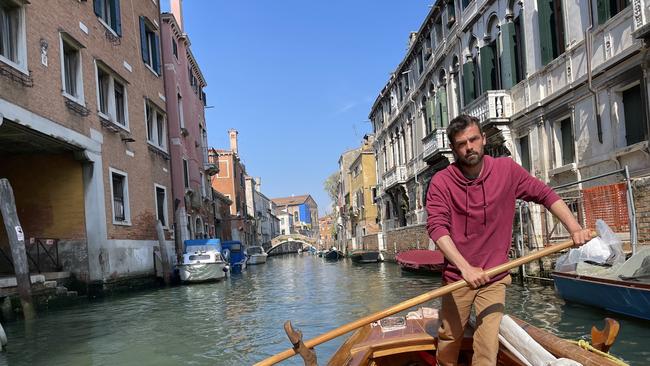
We soon sweep beyond the bricole, the semi-submerged wooden pylons that serve as lane markers so that motorised boats stay in the deeper water. Nine-tenths of the Lagoon is less than 2m deep – some parts are barely 60cm in depth – which is why antique Venetian boats were designed with flat-bottomed hulls. Emiliano explains how to manipulate the sail and rudder to regulate speed and direction across the mirror-flat, silver-blue waters. After about an hour, we approach Sant’Andrea Island, tie up to an ancient stone wall and scramble to dry land.
The fortress has been empty for more than two centuries, and the island has become a haunted wilderness of thorny bushes. We clamber under crumbling arches to a precarious stairwell above a 10m drop, then on to a cannon bastion that offers 360-degree Lagoon views. It would be the perfect spot for a bar. Still, as we glide back across the water, I hope the island will remain forgotten, and as wild and ghostly as it is today. Venice needs its secrets.
In the know
Venice A Bordo runs two-hour group lessons for the vela al terzo and one-hour individual rowing lessons. Sessions require a minimum contribution of €50 ($82).
If you love to travel, sign up to our free weekly Travel + Luxury newsletter here.

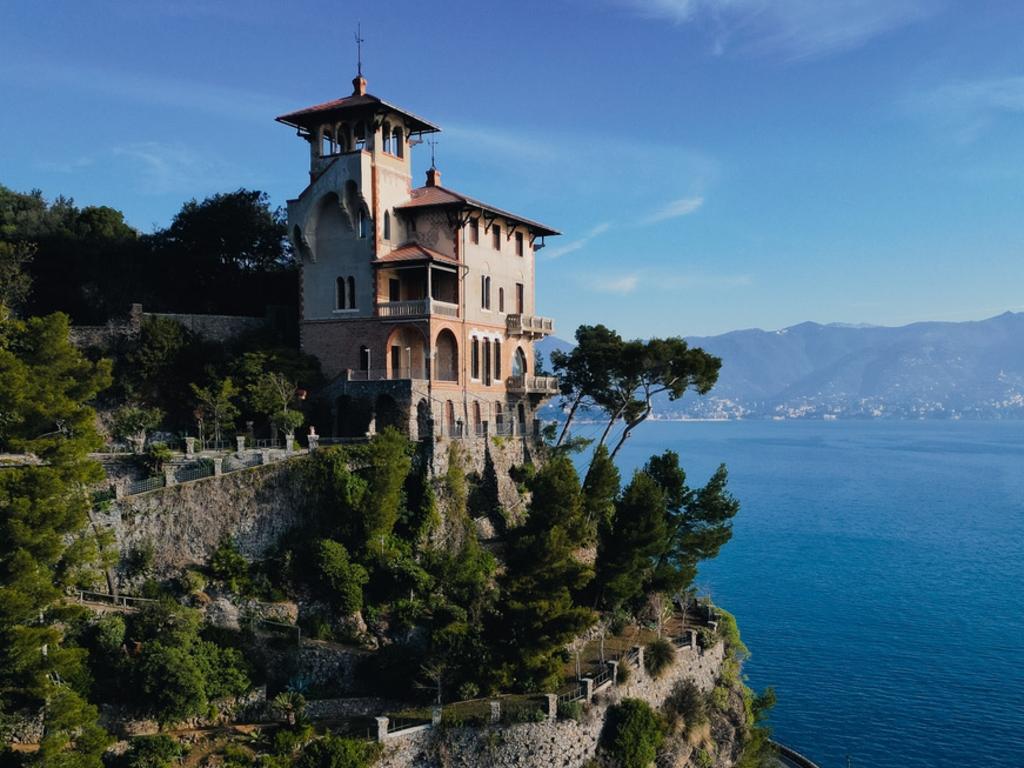


To join the conversation, please log in. Don't have an account? Register
Join the conversation, you are commenting as Logout